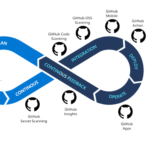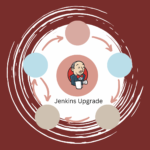The Cloud Native Computing Foundation (CNCF) stands as a pivotal force shaping how modern applications are built, deployed, and managed. Whether you are a developer, DevOps engineer, or technology leader, understanding CNCF’s ecosystem can dramatically enhance your cloud native journey. This article dives deep into CNCF’s significance, its major projects, how to select the right tools, and practical guidance to leverage CNCF effectively.
What is the Cloud Native Computing Foundation (CNCF)?
The Cloud Native Computing Foundation is a nonprofit organization under the Linux Foundation umbrella, established to foster the growth and adoption of cloud native technologies. CNCF’s mission is to build sustainable ecosystems and foster collaboration around open source projects that enable containerized, scalable, and resilient applications in the cloud.
Cloud native computing refers to designing and running applications that exploit cloud computing delivery models, typically involving microservices architectures, containers, dynamic orchestration, and declarative APIs. CNCF acts as a steward for this ecosystem, hosting projects, setting standards, and providing a neutral home for innovation.
Why Follow the Cloud Native Computing Foundation?
Following CNCF is essential for professionals and organizations aiming to stay ahead in cloud native technology for several reasons:
- Access to Leading Open Source Projects: CNCF hosts some of the most widely adopted cloud native projects, such as Kubernetes, Prometheus, and Envoy.
- Community and Collaboration: CNCF provides a collaborative platform where developers, end users, and vendors converge to improve and innovate.
- Standards and Best Practices: CNCF promotes standards that ensure interoperability, security, and scalability of cloud native applications.
- Educational Resources and Events: CNCF organizes conferences like KubeCon, webinars, and certification programs to keep the community informed and skilled.
- Vendor-Neutral Environment: CNCF ensures projects remain open and vendor-neutral, avoiding lock-in and fostering innovation.
Following CNCF’s updates, participating in its community, and adopting its projects can help your organization build resilient, scalable, and future-proof cloud native applications.
Important CNCF Projects and Their Selection Criteria
CNCF categorizes projects based on maturity and adoption levels into three main stages: Sandbox, Incubating, and Graduated. Understanding these stages helps select the right projects for your needs.
Project Maturity Levels Explained
- Sandbox: Early-stage projects with a small user base and evolving codebase. These projects are experimental and may change rapidly.
- Incubating: Projects with growing adoption, stable codebase, and community support. They are more reliable but still evolving.
- Graduated: Mature projects with widespread adoption, proven stability, strong governance, and active community. They are production-ready and heavily supported.
Key CNCF Graduated Projects
- Kubernetes: The flagship container orchestration platform that automates deployment, scaling, and management of containerized applications.
- Prometheus: A leading monitoring and alerting toolkit designed for reliability and scalability in cloud native environments.
- Envoy: A high-performance edge and service proxy designed for cloud native applications.
- etcd: A distributed key-value store used for configuration management and service discovery.
- Fluentd: A unified logging layer that collects, processes, and routes logs from various sources.
Selection Criteria for CNCF Projects
When choosing CNCF projects for your cloud native stack, consider the following criteria:
- Maturity Level: Prefer graduated projects for production workloads; incubating or sandbox projects for experimentation or specific needs.
- Community Activity: Check GitHub activity, issue resolution speed, and community engagement.
- Compatibility: Ensure the project integrates well with your existing tools and infrastructure.
- Documentation and Support: Quality documentation, tutorials, and availability of commercial support.
- Use Case Fit: Match the project’s capabilities with your specific technical and business requirements.
How to Select and Use CNCF Projects: A Practical Checklist
To effectively adopt CNCF projects, follow this step-by-step checklist:
- Define Your Requirements: Identify your application’s architecture, scalability needs, monitoring, logging, and security requirements.
- Research CNCF Projects: Explore CNCF’s project landscape and maturity levels at https://www.cncf.io/projects/.
- Evaluate Project Maturity: Prioritize graduated projects for critical components; consider incubating projects for innovative capabilities.
- Assess Community and Ecosystem: Review GitHub repositories, community forums, and CNCF events to gauge activity and support.
- Test in a Sandbox Environment: Deploy projects in a controlled environment to validate compatibility and performance.
- Plan Integration: Design how the projects will interact with your existing infrastructure and workflows.
- Implement Incrementally: Start with core components (e.g., Kubernetes for orchestration), then add monitoring (Prometheus), logging (Fluentd), and security tools.
- Monitor and Optimize: Continuously monitor performance, update projects regularly, and participate in CNCF community for best practices.
Practical Examples and Case Studies
Example 1: Spotify’s Cloud Native Journey
Spotify leverages Kubernetes extensively to orchestrate its microservices architecture, enabling rapid deployment and scaling of music streaming services globally. They also use Prometheus for monitoring and Envoy for service mesh capabilities, illustrating a mature CNCF ecosystem adoption.
More details: Spotify CNCF Case Study
Example 2: The New York Times Modernizes with CNCF
The New York Times migrated to a cloud native architecture using Kubernetes and other CNCF projects to improve deployment speed and reliability of their digital content platforms.
More details: NY Times CNCF Case Study
Latest Tools, Technologies, and Frameworks in CNCF Ecosystem
- Kubernetes Operators: Automate complex application management on Kubernetes.
- Service Meshes: Tools like Istio and Linkerd for managing service-to-service communication securely and reliably.
- GitOps Tools: Flux and Argo CD enable declarative continuous delivery for Kubernetes.
- Serverless Frameworks: Knative and OpenFaaS bring serverless capabilities to Kubernetes.
- Security Tools: Projects like Falco and SPIFFE for runtime security and identity management.
Challenges and Solutions in CNCF Adoption
- Complexity Management: Cloud native stacks can become complex; solution: adopt automation tools like Operators and GitOps.
- Skill Gap: Teams may lack cloud native expertise; solution: invest in CNCF certifications and training.
- Integration Overhead: Multiple projects require integration; solution: use CNCF-endorsed tools with strong interoperability.
- Security Concerns: Dynamic environments increase attack surface; solution: implement CNCF security projects and best practices.
Future Outlook and Emerging Trends
The CNCF ecosystem continues to evolve rapidly with emerging trends such as:
- Increased Adoption of AI/ML Workloads: Cloud native platforms optimized for AI/ML pipelines.
- Edge Computing Integration: CNCF projects expanding to support edge-native applications.
- Enhanced Observability: Unified telemetry and AI-driven monitoring tools.
- Greater Focus on Security: Zero-trust architectures and supply chain security becoming standard.
- Expansion of Serverless and Event-Driven Models: More CNCF projects supporting these paradigms.
A Summary
The Cloud Native Computing Foundation is the cornerstone of modern cloud native innovation. By understanding CNCF’s project landscape, maturity levels, and selection criteria, organizations can confidently build scalable, resilient, and future-ready applications. Leveraging CNCF’s ecosystem, from Kubernetes to Prometheus and beyond, empowers teams to embrace the cloud native paradigm effectively. Staying engaged with CNCF community and adopting its best practices will keep your cloud strategy competitive and robust.
For those ready to embark on or deepen their cloud native journey, following this expert guide and checklist ensures a strategic and practical approach to CNCF adoption.
Further Reading & References
- Cloud Native Computing Foundation Official Site
- CNCF Projects Landscape
- CNCF Case Studies
- “Cloud Native DevOps with Kubernetes” by John Arundel & Justin Domingus, O’Reilly Media
- “The Kubernetes Book” by Nigel Poulton
Ready to leverage CNCF projects for your cloud native transformation? Contact us today to get expert guidance tailored to your needs: https://stonetusker.com/contact-us/



